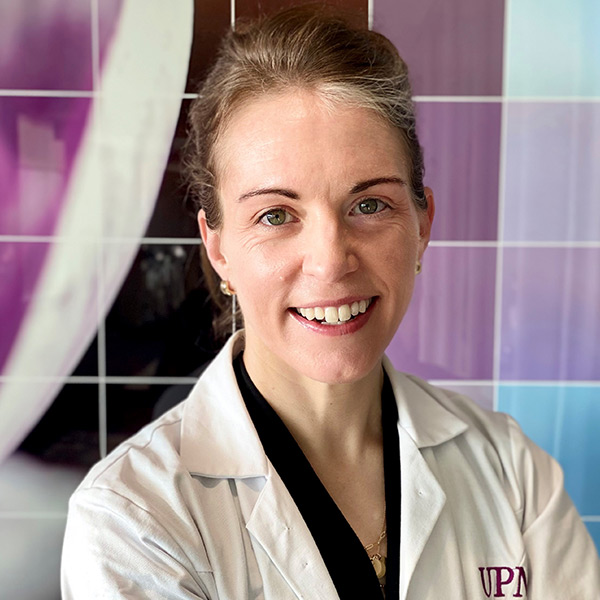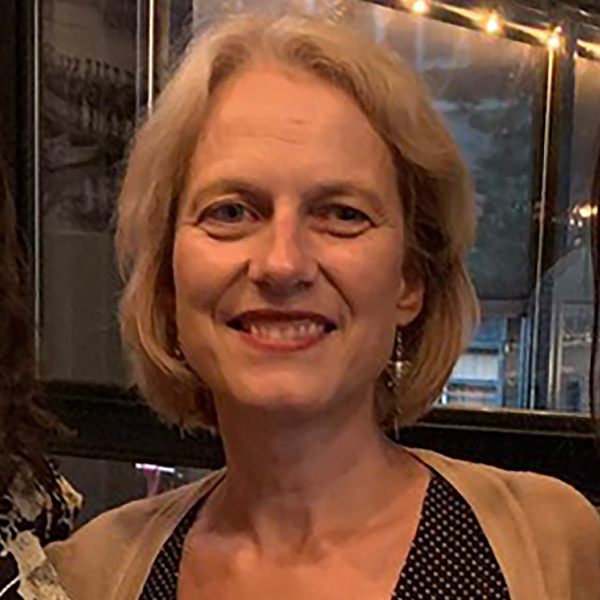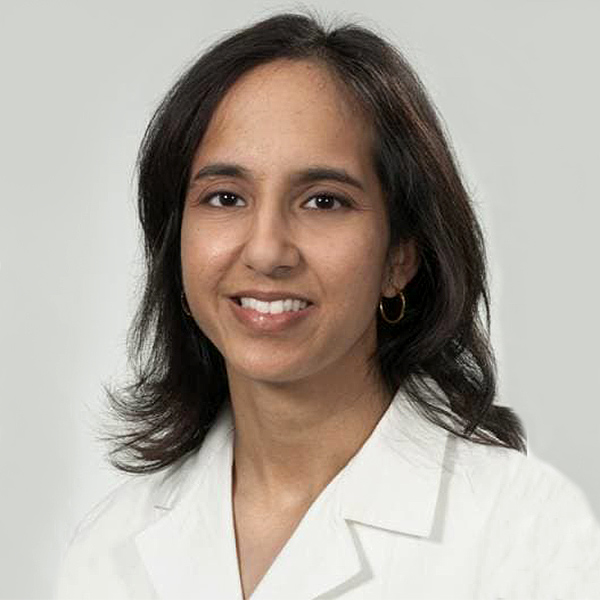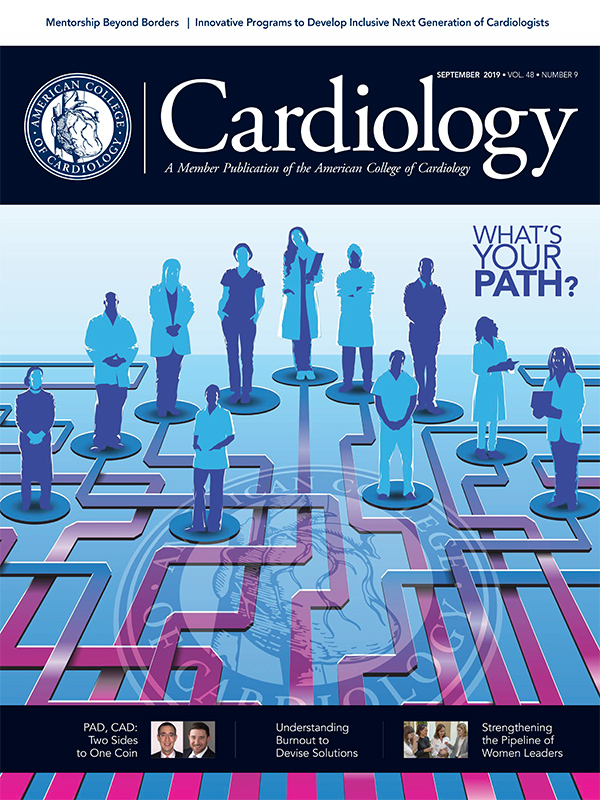Courageous Conversations | Building and Strengthening the Pipeline of Women Leaders

Believing in yourself. Banishing negative thinking. Balancing family and career. Developing a support network. Creating a team. Mentoring and inspiring others. Continuously learning.
These are just some of the things required to succeed as a woman in cardiology and rise to a leadership position in a professional field that has long been underrepresented by women. At least, that's what three women on the ACC's Board of Governors (BOG) told us when we reached out asking for the secrets to their success.
It turns out there are no secrets. Just an awareness of the challenges they would face and the inner drive and outer support to overcome them.
Katie Berlacher, MD, MS, FACC
Governor, ACC Western Pennsylvania Chapter

Like her two other BOG counterparts, Katie Berlacher, MD, MS, FACC, assistant professor of medicine at the University of Pittsburgh Medical College, where she's also the program director of Cardiovascular Fellowship, found that one of the biggest barriers to leadership success came from within.
She says her own internal "imposter syndrome" (self doubt about qualification) was triggered in part by the fact she would be not only be the first female Governor of the ACC Western Pennsylvania Chapter, but its youngest.
In the end, however, thanks to significant internal reflection and support from her mentors, she realized those are not barriers, but rather the primary reasons she should pursue the role.
Given the impact mentorship has had on her career, Berlacher is adamant about giving back, telling fellows and other Early Career professionals that the most important thing they can do if they want to be leaders is to keep showing up, follow through with commitments and deliver on projects.
"Don't be deterred by not getting on a committee or getting a title," she says. "Those things will come, but they aren't the true definition of leadership."
She also notes that one of the most important strengths a leader can bring to her role is the ability to communicate. "We can always do better in this area," she says. "I am constantly reading more about communication and practicing my skills."
Friederike K. Keating, MD, FACC
ACC Vermont, Northern New England Chapter Governor 2018-2020
ACC Northern New England Chapter President 2019-2020

Friederike K. Keating, MD, FACC, director of nuclear cardiology and professor of medicine at the University of Vermont in Burlington, cut her teeth on leadership early in her career as chief resident, during which she organized schedules, arbitrated conflict, guided the morning report and interacted with administration, among other tasks.
But her real challenge came as president of her child's co-op preschool while working full time as a cardiology fellow. "Parent volunteers are much different from residents when it comes to getting them motivated and staying on target," she says, "and the staff was critical to keeping the ship afloat. I emerged humbled, realizing that leadership was not something that came naturally to me after all. I have since put in time to learn about leadership and this has helped me tremendously along the way."
Still, when the previous ACC Vermont Chapter Governor, Prospero B. Gogo Jr., MD, FACC, approached Keating about becoming his successor, her first reaction was to feel unprepared and inadequate. "I remember sitting myself down in my office and giving myself a lecture on impostor syndrome before accepting the nomination," she says.
But she knew she enjoyed the challenges of leadership positions. "It's fun, it's interesting, it's a way to make a contribution. It's a whole world that you may not think about much during training or early practice years, but positions of leadership are great opportunities to develop your nonclinical skills and make an impact."
Leaders, she says, must have more than the "competence and grit" required to be a good cardiologist. She notes that external support is also critical, whether it's "a supportive partner who considers it parenting, not 'helping' when he takes care of the kids when there's work travel; a division chief who helps encourage through doubts and past imposter syndrome; and/or a practice group that believes covering for each other's absence is part of the culture."
It's also important to give back, Keating says. Getting women into cardiology fellowship remains a challenge, with many women going into other areas of medicine. This calls for leadership and systemic changes, says Keating, to address the issues and barriers that deter women from cardiology fellowship.
"I recently got an email letting me know that an undergraduate student who shadowed me for a semester through our premedical enhancement program was inspired to apply to medical school, something she had been reluctant to do. This shows as a cardiology attending in an academic setting, I have an endless opportunity to teach, inspire and help others overcome the barriers to women in cardiology."
Sangeeta B. Shah, MD, FACC
Governor-Elect, Louisiana ACC Chapter

When Sangeeta B. Shah, MD, FACC, co-director of Adult Congenital Heart Services and associate professor of Ochsner/UQ Clinical School in New Orleans, began looking for opportunities to connect with others in her field five years ago, she helped found the Imaging Society of Louisiana (ISLA).
"It started with the simple goal of sharing knowledge and networking outside our routine circle of health care professionals," she says, "but its success helped me develop skills far beyond clinical cardiology."
Those skills helped her when she became a chapter governor and realized that the barriers to leadership roles were similar with those she faced in achieving her professional goals. "There is this feeling that you are running on a treadmill instead of running outside to the top of a mountain," she says.
Thus, she worked to develop skills sets outside of medicine, giving TED talks, producing podcasts, reading books, engaging with a leadership coach and interacting with leaders outside cardiology. "I had to step outside of my comfort zone, work on specific solutions to challenges and silence any sabotaging voice," she states.
Role models and mentors are crucial and Shah says it's important to identify who's on your team bench and engage with them. This may mean seeking them out, perhaps outside of your usual daily contacts, and they may change depending on career stage. Shah notes her sponsors have advocated for her and helped open doors for leadership.
Taking on leadership roles, however, meant taking on more work and time on top of her regular day. So why does she do it?
"As physicians, we spend a significant amount of our life learning physiology, anatomy, disease processes and then keeping up with the knowledge to best treat our patients," she says. "Initially in our careers, our success taking care of patients often defines our happiness with our career." However, as we mature in our careers, we need something more to define our growth and happiness.
Becoming involved and developing a voice at the table can help doctors focus on a meaningful life, she shares. "The renowned psychologist Martin Seligman says meaning comes from belonging to and serving something beyond yourself and from developing the best within you," she says. "This is exactly what motivates me to spend extra time and work toward leadership roles with a focus of reaching my potential."
Two of the most important skills she learned as a leader, she says, is how to listen and how to distinguish fact from feeling. She describes three levels of listening: listening to your inner voice; listening intently to another person; and listening to understand what is not being said. As for the second skill set, she said, you must consider both facts and feelings when making decisions in order to be successful.
Her advice to others? "Learn to communicate with people not like yourself and when a challenge arises, do not let others speak for you. Leadership can be learned."
A Day in Their Shoes: A Step Towards Recognizing the Challenges
Pregnancy and motherhood are two of the challenges women continue to face as they work to advance their careers. What does this mean at a practical day-to-day level for women?
The BOG members interviewed here shared stories that illustrate the subtle but persistent hurdles, curveballs and setbacks that perhaps many may not recognize.
The preference by a cath lab director for a female fellow to defer her cath lab rotation over providing the fetal monitor badge she requested.
The preference of an office mate for a female cardiologist to find another space for "that" when the request to her office mate was simply to put a lock on the office door for privacy when she pumps breastmilk.
The request by partners to a female cardiologist in her third trimester to double her weekend on-calls because they'd be covering her during maternity leave.
The admonishment of a female cardiologist with an infant at home, because she was not viewed as attending enough evening events to advance her career.
"We need buy-in from all members of the organization, from small group practices to large academic institutions," says Friederike K. Keating, MD, FACC. The recurring and consistent statements from the ACC promoting diversity and inclusion are important.
Yet, she notes, the conversation must be larger and must move beyond discussions within Women in Cardiology meetings. The conversation must move to the larger community where everyone, men and women alike, brainstorm actual scenarios and collaborate to find solutions.
Keywords: ACC Publications, Cardiology Magazine, Goals, Group Practice, Electronic Mail, Fellowships and Scholarships, Leadership, Learning, Mentors, Happiness, Motivation, Parenting, Pregnancy, Parental Leave, Reading, Schools, Medical, Teaching Rounds, Volunteers, Privacy, Students
< Back to Listings

